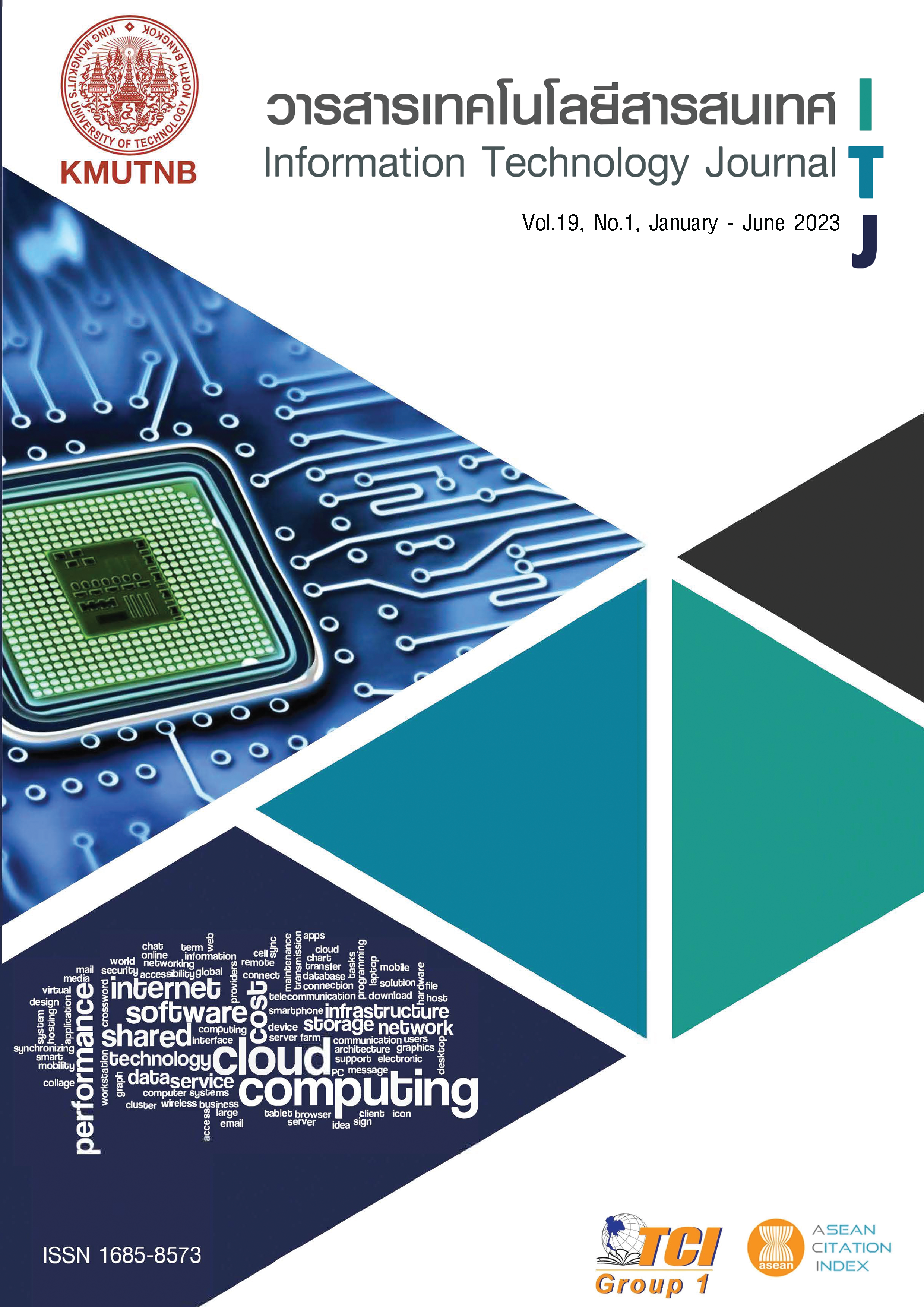Predicting Traffic Status of Inner Bangkok with Deep Learning
Main Article Content
Abstract
The objectives of this research was to compare the efficiency of predicting road traffic status in the inner Bangkok area, between the properly parameterized deep learning models with different conventional algorithms. In process of research methodology, the researcher used a computer program developed to collect traffic situation images from Google Maps specific inner Bangkok area, every half hour for 2 months, 1,844 traffic images were obtained, combined with duration of the day to create more independent variables. The findings revealed that percentage of prediction accuracy when predicted with test data sets in different algorithms as follows, Decision Tree: 71%, Random Forest: 71%, K Nearest Neighbors: 73%, Naive Bayes: 63 %, Gradient Boosting: 72% and Deep Learning: 75%. This research proposed a practical method for collecting traffic data from images on Google Maps websites. Preprocessing data ready for machine learning and a model for predicting traffic status with deep learning. Which the result of the prediction is the road traffic condition predicted 1 hour in advance at the study point was the area of Sathorn Road. Specify a prediction as a class, according to the color scale of Google Maps, there are 4 classes, namely, green means active traffic, orange means moving, red means heavy traffic and dark red means traffic is congested very much. The model predicts the most probable traffic status. The results of the predictions are useful for people traveling or transportation logistics companies who use routes to know the traffic status in advance, including those interested in studying traffic data with machine learning.
Article Details
References
Kasikorn Research Center, Impacts of Traffic Congestion on Bangkok’s Economy and Life. Available Online at https://www.kasikornresearch.com/en/analysis/k-econ/economy/Pages/35760, accessed on 20 November 2020.
N. G. Polson, and V. O. Sokolov. “Deep learning for short-term traffic flow prediction.” Transportation Research Part C: Emerging Technologies, Vol. 79, pp. 1-17, June, 2017.
S.-Y. Yang, and C.-L. Hsu. “A location-based services and Google maps-based information master system for tour guiding.” Computers & Electrical Engineering, Vol. 54, pp. 87-105, August, 2016.
M. Aghaabbasi, M. Moeinaddini, M. Z. Shah, and Z.Asadi-Shekari. “Addressing issues in the use of Google tools for assessing pedestrian built environments.” Journal of Transport Geography, Vol. 73, pp. 185-198, December, 2018.
H. Khambati, K. Boles, and P. Jetty. “Google Maps offers a new way to evaluate claudication.” Journal of Vascular Surgery, Vol. 65, No. 5, pp. 1467-1472, May, 2017.
M.-J. Tsai, Y.-H. Tao, and I. Yuadi. “Deep learning for printed document source identification.” Signal Processing: Image Communication, Vol. 70, pp. 184-198, February, 2019.
N. Lunardon, G. Menardi, and N. Torelli. “ROSE: A Package for Binary Imbalanced Learning.” R Journal, Vol. 6, No. 1, June, 2014.
V. López, A. Fernández, S. García, V. Palade, and F. Herrera, “An insight into classification with imbalanced data: Empirical results and current trends on using data intrinsic characteristics.” Information Sciences, Vol. 250, pp. 113–141, November, 2013.
Y. Zhao, H. Zhang, L. An, and Q. Liu. “Improving the approaches of traffic demand forecasting in the big data era.” Cities, Vol. 82, pp. 19-26, December, 2018.
Y. Wu, H. Tan, L. Qin, B. Ran, and Z. Jiang, “A hybrid deep learning based traffic flow prediction method and its understanding.” Transportation Research Part C: Emerging Technologies, Vol. 90, pp. 166-180, May, 2018.
Y. Liu, Z. Liu, and R. Jia. “DeepPF: A deep learning based architecture for metro passenger flow prediction.” Transportation Research Part C: Emerging Technologies, Vol. 101, pp. 18-34, April, 2019.
J. Wang, R. Chen, and Z. He. “Traffic speed prediction for urban transportation network: A path based deep learning approach.” Transportation Research Part C: Emerging Technologies, Vol. 100, pp. 372-385, March, 2019.
J. Xiao, Z. Xiao, D. Wang, J. Bai, V. Havyarimana, and F. Zeng, “Short-term traffic volume prediction by ensemble learning in concept drifting environments.” Knowledge-Based Systems, Vol. 164, pp. 213-225, January, 2019.
R.L. Figueroa, Q. Zeng-Treitler, S. Kandula et al. “Predicting sample size required for classification performance.” BMC Med Inform Decis Mak. Vol. 12, No. 8, February, 2012.
G. Gorsky, M. D. Ohman, M. Picheral, S. Gasparini, L. Stemmann, J.B. Romagnan, A. Cawood, Stéphane Pesant, C.G. Comas, and F. Prejger. “Digital zooplankton image analysis using the ZooScan integrated system,” Journal of Plankton Research, Vol. 32, No. 3, pp. 285–303, March, 2010.
F. Faul, E. Erdfelder, A. Buchner, and A.-G. Lang. “Statistical power analyses using G*Power 3.1: Tests for correlation and regression analyses.” Behavior Research Methods, Vol. 41, pp. 1149-1160, November, 2009.


